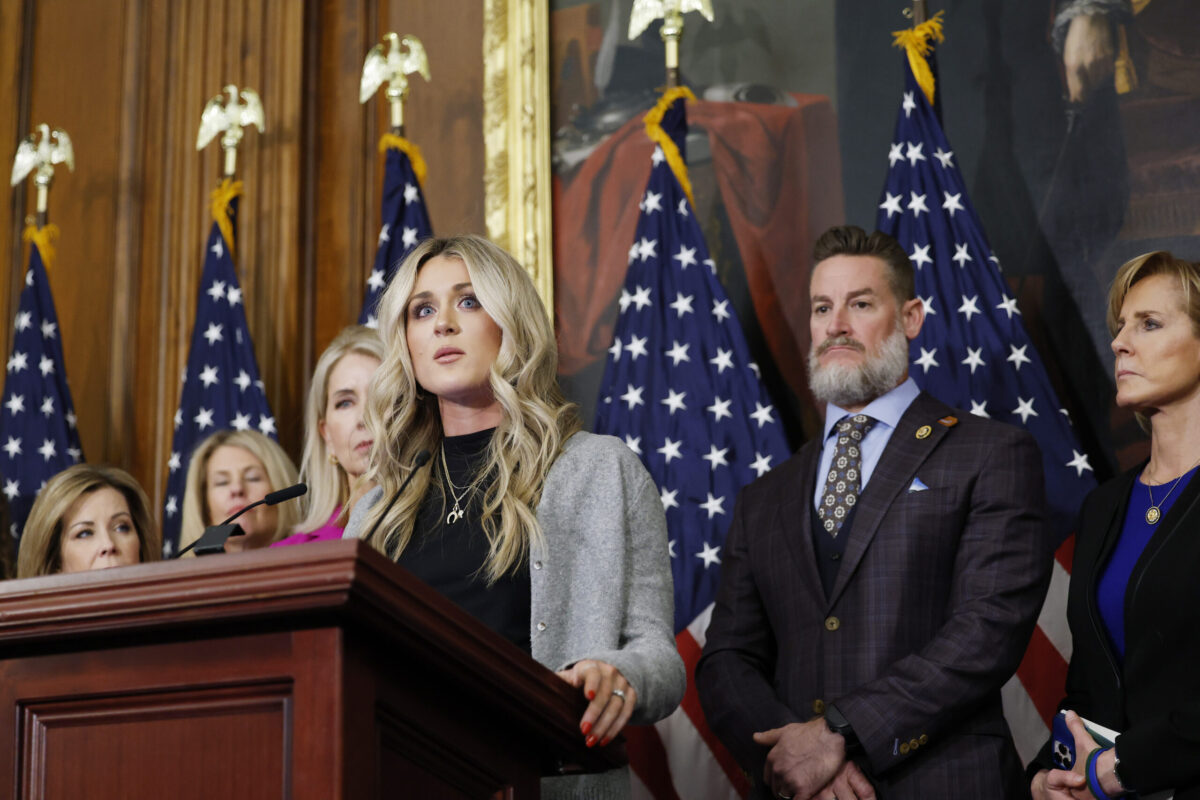‘National punchline’: Major state extends ballot-counting from November election to December!



While most political strategists and campaign operatives are finally enjoying a post-election repose, making their favorite Thanksgiving fixings and preparing to deck the halls, California’s election officials and party leaders are still on the job.
Once again this year, California is the last state to finish its vote-counting, thanks to a set of vote-by-mail election laws the Democratic Party’s supermajority in the state legislature passed beginning last decade – purportedly to encourage more voter participation.
But making it easier to vote has come with a cost: The state is now a national punchline for election inefficiency, and critics assail it as rife for fraud. As of Tuesday night, two fiercely contested congressional races are hanging in the balance, and three state Assembly races remain too close to call.
“We’re still working,” lamented Jessica Millan Patterson, who chairs the California Republican Party. “Not just as Republicans, but as Californians, it’s embarrassing that we’re the last state in the nation. We’re the home of Silicon Valley, and we can do better. Florida has their elections tabulated in three hours.”
Yet three weeks after the election, there are still 109,485 votes to count across 58 counties, according to California Secretary of State Shirley Weber. And even when all the votes are counted, they won’t be certified until mid-December.
The main reason behind the delays? The state sends a ballot to every registered voter and counts all that are turned in within a week after polls close on Election Day – even if the ballots don’t carry a postmark. All that’s required is that a voter “has dated the vote-by-mail ballot identification envelope or the envelope otherwise indicates that the ballot was executed on or before Election Day,” according to California regulations.
County election officials must complete final counts of all 15.3 million votes cast by Dec. 5, and Weber has until Dec. 13 to certify the results. The vast majority of California voters use vote-by-mail, which slows down the vote-counting process.
“We have to open envelopes, we have to verify the signature, and all of those things before we can actually accept that ballot,” Weber said during a press conference the week after the election. “We have to make sure that that’s the person who actually sent the ballot in.”
But that’s not the whole story. The later deadlines have led to slower counts, as counties with strained election resources have no incentive to pay workers overtime to count votes around the clock.
And each year, the state legislature passes more laws lengthening the process. Under state law, counties must notify voters if their ballot isn’t accepted because of a missing or questionable signature so they can “cure” their ballot by signing a form verifying its authenticity. This year, the California legislature extended the time voters must respond to the notice and return the signed form. They now have until Dec. 1.
Republicans, on a national basis, have ridiculed the process, arguing that the system is vulnerable to cheating. They also point to the state’s “ballot harvesting” law, which went into effect in 2016 and allows any individual to return stacks of ballots to an unattended drop box or county elections office. Before that law, only a member of the same household could return a voter’s ballot.
Florida Gov. Ron DeSantis used the late vote-counting last week to take a shot at California, continuing the heated rivalry between the two states – and between DeSantis and California Gov. Gavin Newsom.
“California is still ‘counting’ votes — and there are two congressional races where the leads enjoyed by GOP incumbents have been either eliminated or dramatically reduced long after Election Day,” DeSantis posted on X.com. “It is possible that Republicans lose one or both of these seats — making the House majority razor thin. California’s election system is a disgrace, and the state should follow Arizona’s lead, recognize the need for an overhaul, and enact transparent reforms.”
But any efforts to speed up the process are unlikely as long as Democrats maintain a supermajority in both state legislature chambers. The U.S. Constitution gives states the power to set up and run elections as they see fit, frustrating Republican officials who have to play by the Democratic-set rules even if they strongly disagree with them.
Earlier this year, voters in Huntington Beach, a conservative-leaning city in Orange County, approved a law requiring voter identification in city elections starting in 2026. California Gov. Gavin Newsom and Democrats in the legislature reacted to it by passing a law prohibiting local governments from adopting voter ID laws. California Attorney General Rob Bonta and Weber also sued the city, arguing that Huntington Beach’s requirement unlawfully conflicts with state law and impedes citizens’ “right to freely cast” their votes without imposing what he called a “hardship” burden on low-income voters, minorities, young and elderly voters, and people with disabilities.
On Nov. 16, an Orange County judge rejected the attorney general’s lawsuit, and the ruling could help clear the way for Huntington Beach and other cities across the state to implement ID requirements for voting. Bonta vowed to appeal the decision, arguing that it didn’t address “the merits of the case.”
“We disagree with the court’s decision that it is too early to bring our lawsuit and remain confident in the strength of our case,” Bonta said.
Still, the court ruling is encouraging Republicans in conservative strongholds where votes have little trust in the current election system.
“I would be a lot more confident in the process if we actually had voter ID,” Sen. Brian Dahle, who represents a largely rural district just south of Oregon, told RealClearPolitics. “You can’t buy a pack of cigarettes in the state without having an ID. It’s ludicrous to think we’re going to let people vote without one. There’s just a lot of opportunity for people to take advantage of the system.”
For now, California Republican officials say they have little choice but to play by the Democrats’ rules, trying to use them to their advantage when possible. During Millan Patterson’s tenure, the state party developed a far more robust ground game, developing a ballot harvesting operation, scrutinizing vote-counting, and curing ballots after Election Day.
Over the last three election cycles, the GOP efforts to scrutinize vote-counting and cure ballots paid off, but its effectiveness this year is still up in the air.
In 2020, Millan Patterson said the party had poll watchers to monitor 60% of all ballots. That year, Rep. Mike Garcia, a Republican locked in a tight race for a seat previously held by a Democrat, beat his challenger, Christy Smith, by 333 votes. But this year Garcia lost 51%-49% to George Whitesides, with 95% of the votes counted.
In 2022, the state party had volunteers and lawyers scrutinizing 93% of all vote-counting. That year, Republican John Duarte won against Assemblyman Adam Grey by 560 votes. In a rematch this year, Gray leads Duarte by 182 votes, with 95% counted, as of Tuesday night. In the other closely contested race in Orange County, Democrat Derek Tran leads GOP Rep. Michelle Steel by 613 votes, as of Tuesday night.
Also, in 2022, Greg Wallis, a GOP candidate, was locked in one of the closest Assembly races in history. After nearly all votes were counted, Republican officials worked to cure an undisclosed number of ballots, and Wallis won by 87 votes.
“In those types of incredibly close races, you have a lot of scrutiny over those and protesting ballots,” said Dahle, who is term-limited out of his seat. His wife, Megan, ran a successful race to replace him, winning 76% of the vote.
Still, there’s little doubt that the Golden State shifted decidedly toward Republicans this year. Millan Patterson credited Trump with moving nearly every county across California to the right, with several counties flipping from voting for Joe Biden in 2020 to voting for Trump in 2024. Every county also voted to approve Proposition 36, a tough-on-crime measure aimed at strengthening sentencing after a decade of lenient prosecutions across the state.
The California Republican Party coordinated with the Republican National Committee and county committees to deploy what she called “the largest election integrity infrastructure” the party has had. Republicans enlisted thousands of trained volunteers and more attorneys to help monitor vote-counting and cure ballots in the most targeted districts. In total, this team helped cure roughly 3,500 ballots after Election Day, with most taking place in the two most highly contested elections, the Duarte and Steel races.
“We can’t change the rules until we get more Republicans elected,” she said. “While it’s frustrating, we’re going to continue to do the work necessary to cure every legal ballot and make sure that they are counted so that we can have confidence in these elections.”
First elected in 2019, Millan Patterson has worked to help Republicans develop their own ballot harvesting ground game, coordinating with churches and recruiting thousands of volunteers to hold barbecues and other events where ballots are collected en masse and later dropped off at county election offices. Before Election Day, Patterson said the GOP collected 33,000 ballots through the effort. It’s hard to compare that with the Democrats’ efforts because they are more tight-lipped about their ballot-harvesting results.
During Millan Patterson’s tenure, the party has added at least 775,000 new Republicans to the voter rolls, gaining in every county and flipping two targeted districts red, after losing voter registrations over several years prior. Ric Grenell, Trump’s former U.S. ambassador to Germany who is under consideration to serve as his envoy on Ukraine, led a significant registration drive through his “Fix California” group over the last few years.
What's Your Reaction?
 Like
0
Like
0
 Dislike
0
Dislike
0
 Love
0
Love
0
 Funny
0
Funny
0
 Angry
0
Angry
0
 Sad
0
Sad
0
 Wow
0
Wow
0








































































